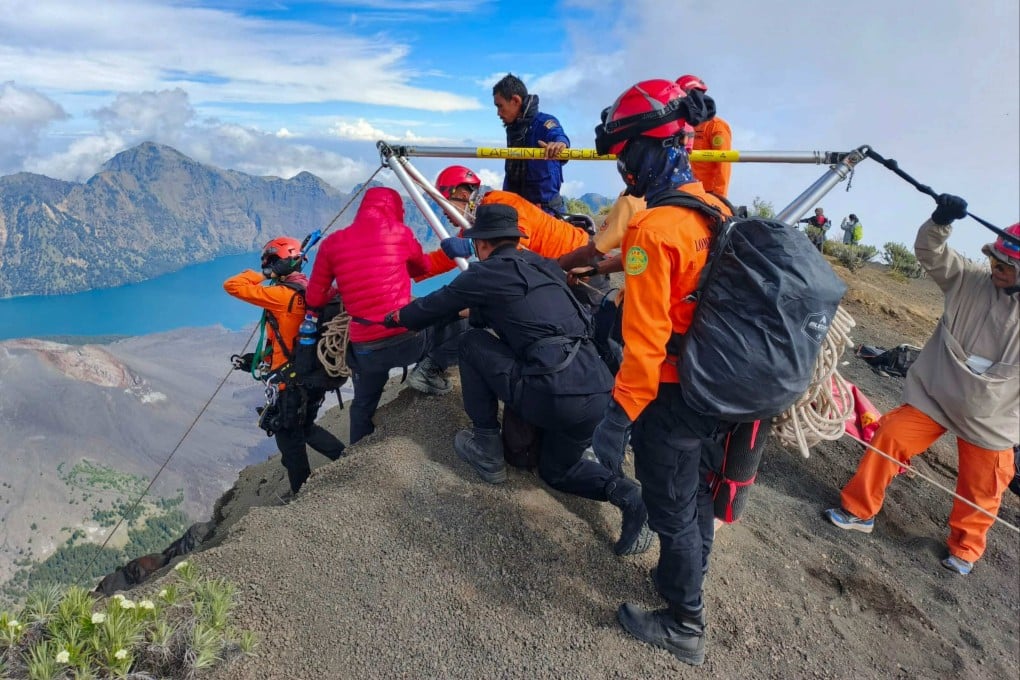Mount Rinjani trekking deaths: tragic lessons and safer climbs
Mount Rinjani, Lombok’s majestic 3,726 m volcano, is a bucket-list trek known for crater lakes, sunrises and challenging terrain. Yet its beauty carries risk—recent years have seen a disturbing rise in Rinjani trekking deaths, with both local and international climbers losing their lives in falls and accidents.
⚠️ Recent tragedies on Rinjani
In June 2025, 26‑year‑old Brazilian traveler Juliana Marins slipped during a night ascent and plunged 300–600 m into a ravine. Though drone footage spotted her alive the next morning, adverse weather, steep cliffs, and fog delayed rescue. Sadly, she died within 20 minutes of the fall; her body was recovered four days later
Her family alleged negligent rescue protocols and misleading information timesofindia.indiatimes.com+6thedailybeast.com+6people.com+6.
Just a month earlier, a Malaysian hiker, 57‑year‑old Rennie Abdul Ghani, fell 80 m on the Torean route and died despite multi‑agency rescue efforts en.wikipedia.org+1kompas.id+1. Numerous other incidents—like a Russian trekker’s fall in October 2024 and a Malaysian fatality in May 2025—underscore dangerous patterns thedailybeast.com+6en.wikipedia.org+6travelandtourworld.com+6.
Why are so many climbers at risk?
-
Extreme terrain – Rinjani features steep, rocky and sandy slopes (60–80°), hidden craters and sudden cliff edges thesun.co.uk+15kompas.id+15en.wikipedia.org+15.
-
Unpredictable weather – Dense fog and low temperatures (sometimes below 0 °C) erode visibility and grip researchgate.net+1watchers.news+1.
-
Limited rescue infrastructure – No formal mountain rescue service. BASARNAS uses aid from guides, drones and occasional military support travelandtourworld.com+4rinjanidawnadventures.com+4watchers.news+4.
-
Fatigue & poor planning – Trekkers often underestimate the climb, skip acclimatisation, hike solo or lack proper gear (Rinjani Safety Tips Trekking)
How to reduce risk and avoid Rinjani accidents
-
Use licensed local guides and porters: National Park rules require guides; reputable operators maintain low guide-to-guest ratios (1:4)
-
Train and prepare: Cardio fitness, strength, balance drills, and a rest day in Lombok for acclimatisation are essential
-
Bring proper gear: Hiking boots, layered clothing, gloves, clear documentation and fully stocked first‑aid kits, including GPS or satellite backup, are mandatory .
-
Respect weather warnings: Avoid the trekking window during foggy dry-season peaks and check weather before summit attempts .
-
Choose eco‑conscious tours: Operators adhering to zero‑waste principles help protect trails and manage group sizes
-
Insure comprehensively: Venture insurance that covers helicopter evacuation and mountain rescue is critical
Final thoughts
Mount Rinjani’s allure comes with steep risks. The wave of recent tragedies, especially Juliana’s death, is a stark reminder: adrenaline-filled adventure requires responsible planning, professional guidance, and deep respect for nature’s unpredictability. By prioritising safety, preparation and ethical guiding, climbers can honor Rinjani by minimizing future fatalities—and ensuring the mountain remains a place of breathtaking wonder, not sorrow.

